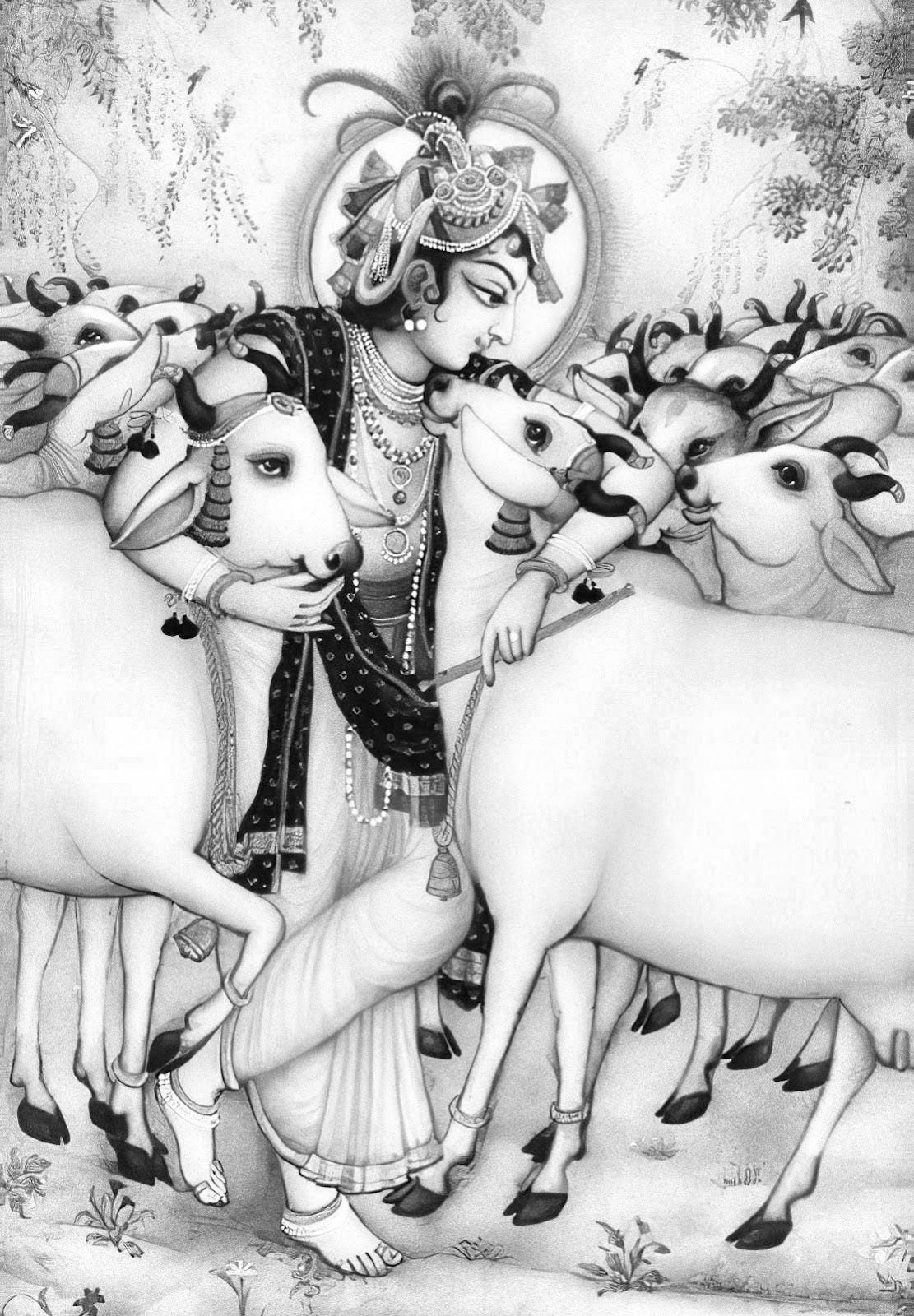The Second Pāda of The Govinda-bhāṣya of Baladeva Vidyābhūṣaṇa
This second pāda continues this effort in showing how this Supreme Brahman is consistently referred to in the scriptures, but now examines passages of different Upaniṣads
« Vedānta-sūtra: The Govinda-bhāṣya of Baladeva Vidyābhūṣaṇa
The Second Pāda
The Vedānta-sūtra is also called ṣoḍaśa-pāda, because it is composed of sixteen divisions of aphorisms. The book is divided into four chapters (adhyāyas), and each adhyāya is composed of four divisions (pādas).
In the first pāda, which we just concluded, Vyāsadeva begins with a solemn declaration of the purpose of the text: athāto brahma-jijñāsā, declaring that the book has the purpose of guiding us in the ultimate goal of human life, which is to enquire about the absolute truth. Vyāsadeva then reinforces the authority of the Vedas as the very means to understand this Absolute Truth, and by successive statements proves that understanding this Supreme Personality of Godhead is the very purpose of the Vedas. Point by point, he establishes that the Supreme Brahman is the Absolute Truth, consistently described in many passages from the scriptures as the Supreme Person, who has not only personal qualities, but also transcendental pastimes. He is the origin of everything and is completely transcendental. He has no material qualities, but at the same time has transcendental qualities. Incorrect ideas, like the individual soul being one and the same as the Supreme Brahman, or that prāna or ether are the supreme cause, are deconstructed.
This second pāda continues this effort in showing how this Supreme Brahman is consistently referred to in the scriptures, but now examines passages of different Upaniṣads where references to Him are less clear. In other words, the first pāda wins the battle when the field is clear, while the second wins when the field is foggy.
Many passages of the scriptures, when improperly analyzed, appear to support atheistic views, such as the idea of pradhāna being the ultimate cause of the material creation. There are also many terms and names used in the scriptures that appear to refer to something else, such as antaryāmī, akṣara, vaiśvānara, etc. However, when the passages are properly interpreted, considering the context, logic, grammatical structure, and so on, the correct conclusions become clear. The scriptures are the sole path for understanding the Absolute Truth; therefore, apparent contradictions should be reconciled before one can gain access to the proper conclusions.
Śrīla Baladeva Vidyābhūṣaṇa starts his commentary with a prayer:
manomayādibhiḥ śabdaiḥ, svarūpam yasya kīrtyate
hṛdaye sphuratu śrīmān, mamasau śyāmasundaraḥ
“May that glorious Śyāmasundara, whose true nature is described through words such as manomaya and others, shine forth in my heart.”
« Vedānta-sūtra: The Govinda-bhāṣya of Baladeva Vidyābhūṣaṇa


